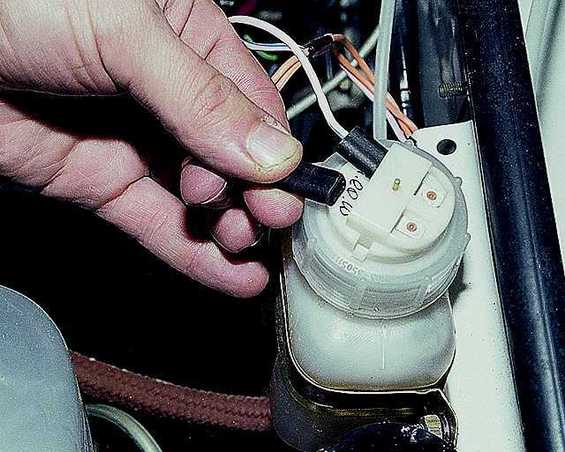
The health of the braking system depends to a large extent on sufficient brake fluid. That is why it is necessary to continuously monitor and implement measures at the level of brake fluid when the level falls below the acceptable level. The brake fluid level sensor is used to signal to the controller if there is not enough liquid in the brake system.
The brake fluid level sensor is located directly in the ballpoint. Its design is very simple to provide maximum reliability. The brake fluid level sensor is a float sensor. When the level of brake fluid is below the acceptable level, the brake fluid is lowered and the contact is closed and the control lamp is lit on the instrument panel. The level of brake fluid must be brought to normal level for contacts to become available.

In spite of the simplicity of the brake fluid level sensor, sometimes it is out of order and the incorrect data is transmitted. It is not difficult to check the brake fluid level sensor, this procedure can be performed by your own hands (you will need an assistant). Insert lighter Manually drown the floats of the float by pointing fingers at it. See if the brake fluid level lamp has caught fire.
- Ignition start
- Manually drown a float by a finger.
- See if the brake fluid level lamp has caught fire.
If the lamp is not caught, the problem is in the contact column or the sensor itself. To test the contacts, you just need to close the output of the connector: if the lamp on the panel catches fire, then the problem is in the sensor.
Repair of the coolant level sensor is most often meaningless, better replaced with a new one. To do this is easy:
- Turn off the ignition.
- Disconnect the wires from the sensor.
- Roll out the GTZ bar cover.
- Eject from the bawka, remove the sensor.
- Set the sensor, gather everything in reverse sequence.










